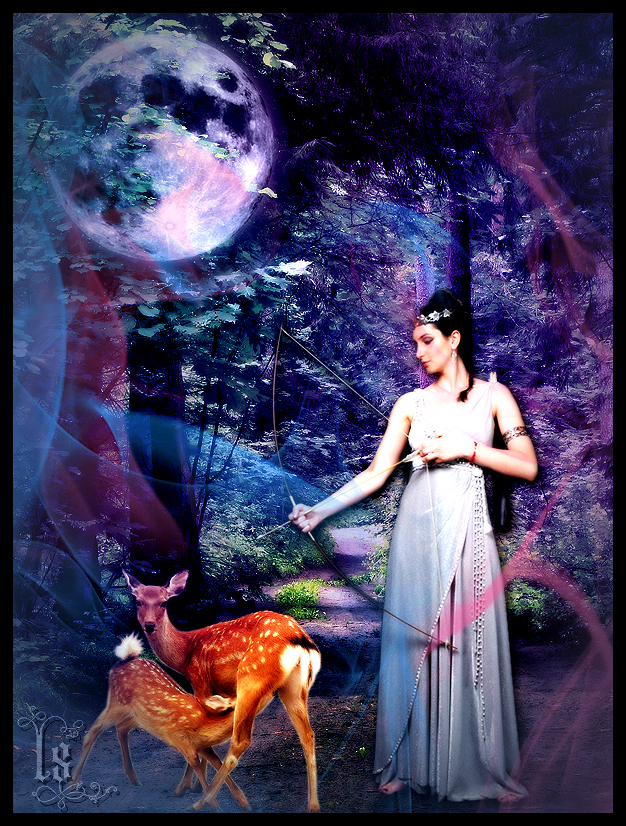Question
Why, moon,
do you let your deer
nibble my tomatoes
when I have poems dancing
in the tip of my pen?
 Artemis -- empyreus
Artemis -- empyreus
Why, moon,
do you let your deer
nibble my tomatoes
when I have poems dancing
in the tip of my pen?
 Artemis -- empyreus
Artemis -- empyreus
In the 7th century BCE Hesiodos reported that
ReplyDeleteLeto bore Apollo and Artemis, delighting in arrows,
Both of lovely shape like none of the heavenly gods,
Apollo and Artemis were the twin children of Zeus and Leto after Zeus changed their mother into a quail to prevent his consort Hera from finding out about his infidelity. Artemis, born first, acted as midwife for the birth of Apollo. Platon associated her name with "artemes" (safe, unharmed, uninjured, pure). A moon goddess, she was also the goddess of the hunt, wilderness, childbirth, and virginity; she was the protector of young girls and the bringer and reliever of disease in women. Though the goddess of wild animals, deer were the only animals held sacred to Artemis herself. Deer were the first animals she captured, and she harnessed 5 golden-horned deer to her chariot. When the Spanish conquered South America they thought they were poisonous due to their bright, shiny fruit and acidic juice. They are, indeed, part of the deadly nightshade family, but only their leaves and immature fruit are mildly toxic. English barber-surgeon John Gerard still believed it was poisonous when he published his "Herbal" in 1597. In Nahuatl, "tomati" meant "the swelling fruit," and Hernán Cortés was probably the 1st to introduce them to Europe after his capture of Tenochtitlan (Ciudad de Mexico) in 1521, and they were taken to Asia after the Spanish conquest of the Islas Filipinas in 1565. At 1st they were grown in gardens or flower beds as ornamentals, "sought only for their beauty" according to the Florentine aristocrat Giovanvettorio Soderini. However, as early as 1544 physician/botanist Pietro Andrea Mattioli noted that a new type of red or golden eggplant had been brought to Italia; a decade later he called them pomi d’oro ("golden apples"). In 1753 in "Species Plantarum" Carl Linnaeus placed the tomato in the genus Solanum (alongside the potato) as Solanum lycopersicum (lyco + wolf, persicum = peach). The 1st cookbook with tomato recipes was published in Napoli in 1692, and tomatoes were not widely consumed in the UK for another 1/2 century. In 1820 the London "The Times" reported that the "love-apple" or "tomato berry" was "now to be seen in great abundance at all our vegetable markets" but was still mainly cultivated "for the singularity of their appearance."